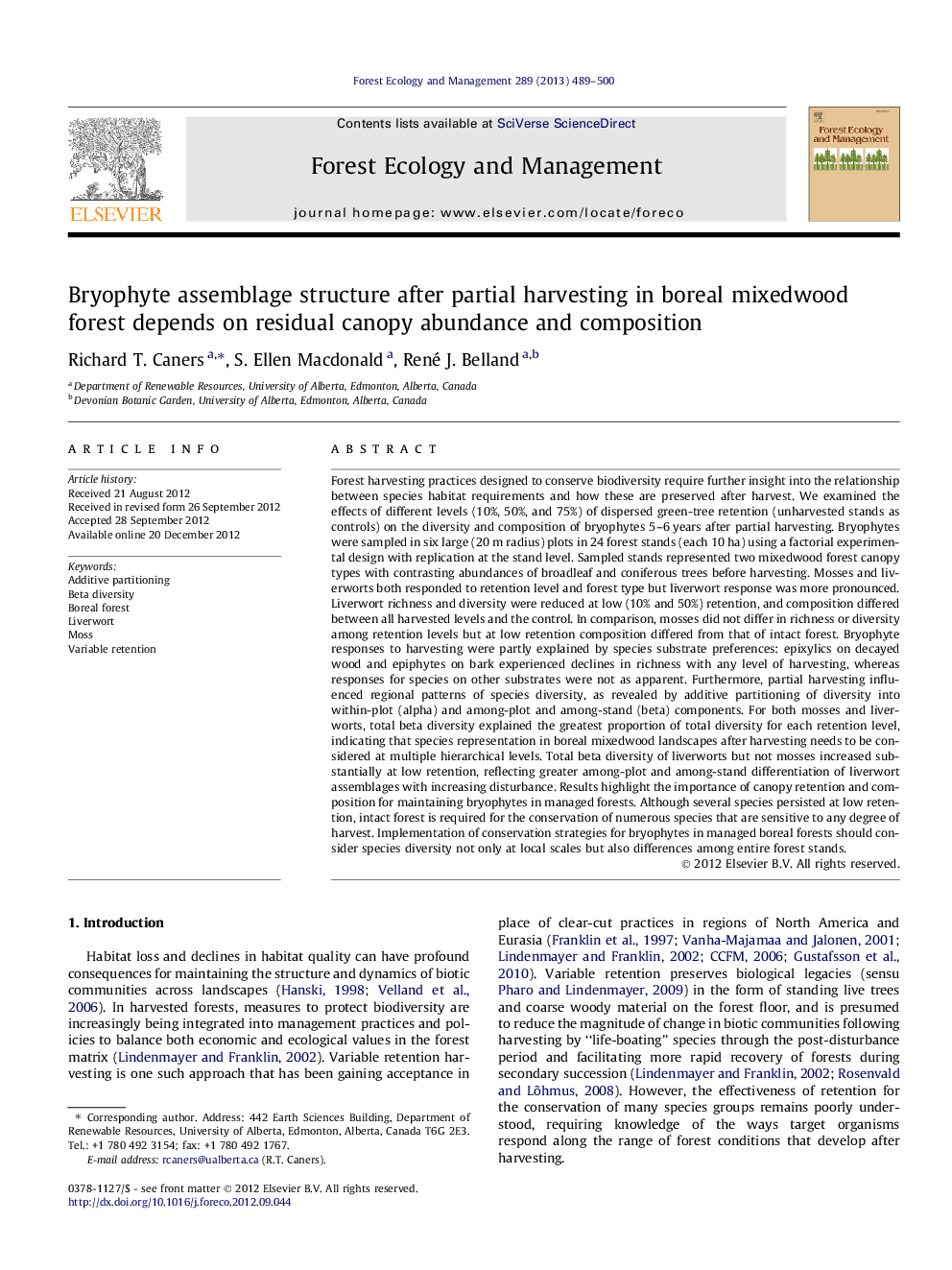| کد مقاله | کد نشریه | سال انتشار | مقاله انگلیسی | نسخه تمام متن |
|---|---|---|---|---|
| 87014 | 159226 | 2013 | 12 صفحه PDF | دانلود رایگان |

Forest harvesting practices designed to conserve biodiversity require further insight into the relationship between species habitat requirements and how these are preserved after harvest. We examined the effects of different levels (10%, 50%, and 75%) of dispersed green-tree retention (unharvested stands as controls) on the diversity and composition of bryophytes 5–6 years after partial harvesting. Bryophytes were sampled in six large (20 m radius) plots in 24 forest stands (each 10 ha) using a factorial experimental design with replication at the stand level. Sampled stands represented two mixedwood forest canopy types with contrasting abundances of broadleaf and coniferous trees before harvesting. Mosses and liverworts both responded to retention level and forest type but liverwort response was more pronounced. Liverwort richness and diversity were reduced at low (10% and 50%) retention, and composition differed between all harvested levels and the control. In comparison, mosses did not differ in richness or diversity among retention levels but at low retention composition differed from that of intact forest. Bryophyte responses to harvesting were partly explained by species substrate preferences: epixylics on decayed wood and epiphytes on bark experienced declines in richness with any level of harvesting, whereas responses for species on other substrates were not as apparent. Furthermore, partial harvesting influenced regional patterns of species diversity, as revealed by additive partitioning of diversity into within-plot (alpha) and among-plot and among-stand (beta) components. For both mosses and liverworts, total beta diversity explained the greatest proportion of total diversity for each retention level, indicating that species representation in boreal mixedwood landscapes after harvesting needs to be considered at multiple hierarchical levels. Total beta diversity of liverworts but not mosses increased substantially at low retention, reflecting greater among-plot and among-stand differentiation of liverwort assemblages with increasing disturbance. Results highlight the importance of canopy retention and composition for maintaining bryophytes in managed forests. Although several species persisted at low retention, intact forest is required for the conservation of numerous species that are sensitive to any degree of harvest. Implementation of conservation strategies for bryophytes in managed boreal forests should consider species diversity not only at local scales but also differences among entire forest stands.
► We examined bryophyte diversity and composition 5–6 years after partial harvesting.
► Retention level and pre-harvest canopy composition influenced bryophyte response.
► Liverworts, and epixylic and epiphytic species, were sensitive to any canopy removal.
► With declining retention beta diversity increased for liverworts but not for mosses.
► Dispersed retention may be effective only for species with high tolerance to harvest.
Journal: Forest Ecology and Management - Volume 289, 1 February 2013, Pages 489–500